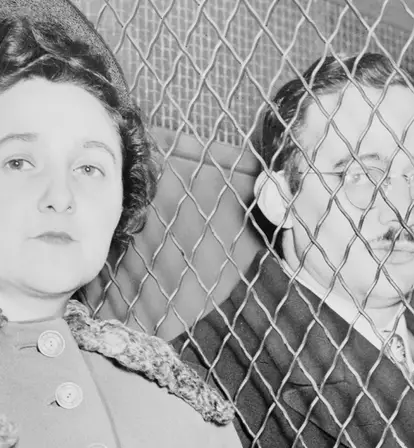Was the trial and execution of Julius and Ethel Rosenberg justified — or was it the product of a nation's collective paranoia?
Few episodes are more emblematic of American Cold War paranoia and Red Scare hysteria than the trial and execution of Julius and Ethel Rosenberg.
After being arrested for passing atomic secrets to the Soviets in 1950, the young New York couple with communist affiliations was soon swept into a sensational trial that enthralled and frightened millions of Americans who were already terrified of both the bomb and communists.
As Senator Joseph McCarthy was leading the Red Scare on Capitol Hill in hopes of outing suspected communists inside the U.S. government, the nation confronted the idea that a nice young married couple like the Rosenbergs were not only Reds but that they might have given the Soviet Union the secrets of nuclear weapons.
After being convicted on those charges in 1951, Julius and Ethel Rosenberg were offered the chance to save themselves from a death sentence if they confessed, but the husband and wife both refused and maintained their innocence.
To this day, their conviction and 1953 execution remain controversial thanks to the lack of hard evidence brought against them and the group of witnesses who recanted and changed statements both during the trial and long afterward.
Were Julius and Ethel Rosenberg the most treacherous of spies, victims of Cold War paranoia, or both? This is the tangled story that shook a nation.
Julius And Ethel Rosenberg Before The War
Born to a Jewish family in New York City on Sept. 25, 1915, Ethel Greenglass initially aspired to become an actress. Instead, she became a secretary for a Manhattan shipping company. Then, she joined the Young Communist League where she met her soon-to-be husband Julius Rosenberg in 1936.
Fellow New York native Julius Rosenberg was born on May 12, 1918 to Jewish immigrants who moved from Soviet Russia to Manhattan’s Lower East Side when he was 11. While they toiled at the local shops to make a living, Rosenberg attended Seward Park High and then City College of New York where he studied electrical engineering.

Bettmann/Getty ImagesThirty-four-year-old Ethel Rosenberg does the dishes in her Knickerbocker Village home the day after her husband was arrested. July 18, 1950.
It was during the Great Depression, while he was still in college, that Julius Rosenberg became a leader in the Young Communist League and met the love of his life.
Three years later, in 1939, Julius Rosenberg had a degree in electrical engineering and Ethel Rosenberg as a wife. After having two sons together, Julius Rosenberg began his engineering career — inside some highly sensitive government sites at the height of World War II-era secrecy.
The Spy Ring Encircling The Atomic Bomb
According to the National Museum of Nuclear Science & History’s Atomic Heritage Foundation, Julius Rosenberg left the Communist Party in 1940 in order to avoid suspicion when he joined the Army Signal Corps Engineering Laboratories in Fort Monmouth, New Jersey.
He did succeed in evading suspicion for five whole years as an engineer and inspector there while researching communications, electronics, radar, and guided-missile controls. But though he avoided trouble at the time, the Soviet-sponsored espionage he was supposedly carrying out would soon seal his fate — even if the truth of the matter remains somewhat in doubt.

Keystone-France/Gamma-Keystone/Getty ImagesJulius Rosenberg was arrested on suspicion of espionage one month before his wife.
Rosenberg was reportedly recruited by the Soviets on Labor Day 1942 and proceeded to provide them with classified documents about the Manhattan Project that was working on building the first atomic weapons. In doing so, he soon supposedly recruited a sizable espionage network to assist him.
His recruits were said to include: project engineer Russell McNutt, Ethel’s brother David Greenglass, Greenglass’ wife Ruth, engineers Nathan Sussman, Joel Barr, Alfred Sarant, and Morton Sobell, as well as chemist Harry Gold and military aviation scientist William Perl.

Bettmann/Getty ImagesDavid Greenglass said he was recruited by Julius Rosenberg to join a Soviet spy ring and that this his sister, Ethel Rosenberg, was complicit in the arrangement. He later admitted he lied about his sister’s involvement to save his wife.
David Greenglass, also a prior member of the Young Communist League, worked on the top-secret Manhattan Project at its lab in Los Alamos, New Mexico. Greenglass would reportedly give Rosenberg information about the technology being tested at Los Alamos, including special lenses used in the bomb. Rosenberg would then pass this information on to Gold who’d deliver it to the Soviets. Meanwhile, Gold also worked with a German physicist and Soviet spy stationed at Los Alamos, named Klaus Fuchs, who helped Gold to obtain classified atomic research.
This spy ring was only detected in 1949 when the U.S. Army Signal Intelligence Service (SIS) discovered that Fuchs was a Soviet spy. He was arrested in the U.K. in 1950 and soon confessed. With his intel, the whole ring quickly collapsed.
The Red Scare
At this time, espionage was of the highest concern to the U.S. government, which lived in fear that the Soviets might steal any sensitive information that could give them an edge in this Cold War which could turn hot at any moment.
After World War II ended, the Soviets raced frantically to develop atomic weaponry and succeeded on Aug. 29, 1949, when they detonated their first bomb. How much of that ominous triumph was based on the intel acquired by Soviet spies in the U.S. is debated to this day.
Indeed, American paranoia about Soviet infiltration wasn’t completely unwarranted — Soviet spies were actually recruiting American scientists for top-secret information. But the fear often went too far, and perhaps no one took it farther than the communist-hunting Senator Joseph McCarthy.
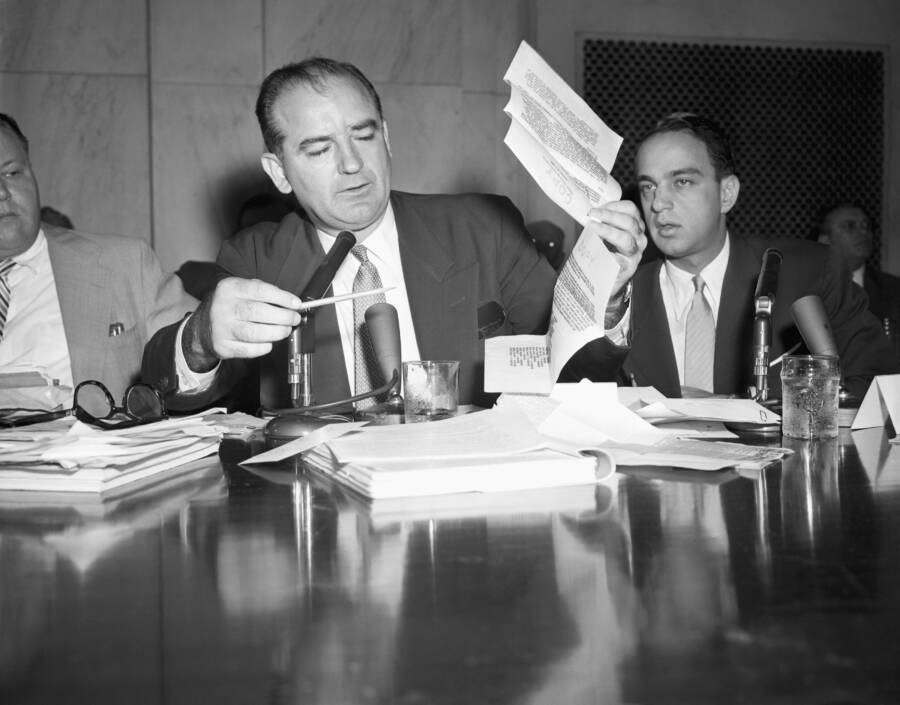
Bettmann/Getty ImagesProsecutor Roy Cohn watches as Senator Joseph McCarthy holds up a letter purportedly written by FBI director Hoover warning that a Fort Monmouth employee had a “direct connection with an espionage agent.”
Beginning in 1950, McCarthy began publicly making enormous accusations about communist infiltration of the U.S. government. Along with colleagues like lawyer Roy Cohn, McCarthy attempted to destroy the names and careers of a number of government employees as well as academics and writers.
It was in this paranoid climate that Julius and Ethel Rosenberg were accused of leaking the most sensitive of information to America’s greatest of enemies.
The Trial And Execution Of Julius And Ethel Rosenberg
After Klaus Fuchs was arrested and charged with violating the Official Secrets Act, he gave up information that implicated Gold and Greenglass, who then named Julius Rosenberg. He was arrested on July 17, 1950 and his wife’s arrest followed after new evidence was gathered a month later.
Because the United States was not at war with the U.S.S.R. at this time, the Rosenbergs could not be tried for treason and were instead tried on the more amorphous charge of conspiracy to commit espionage.
Quickly, the prosecution felt that they had a solid case against the Rosenbergs, if for no other reason than the fact that they could easily be painted as being sympathetic to both communism and the Soviet Union. Not only did the couple meet at a communist group of which they were both members, but Julius Rosenberg’s parents were also Russian immigrants.
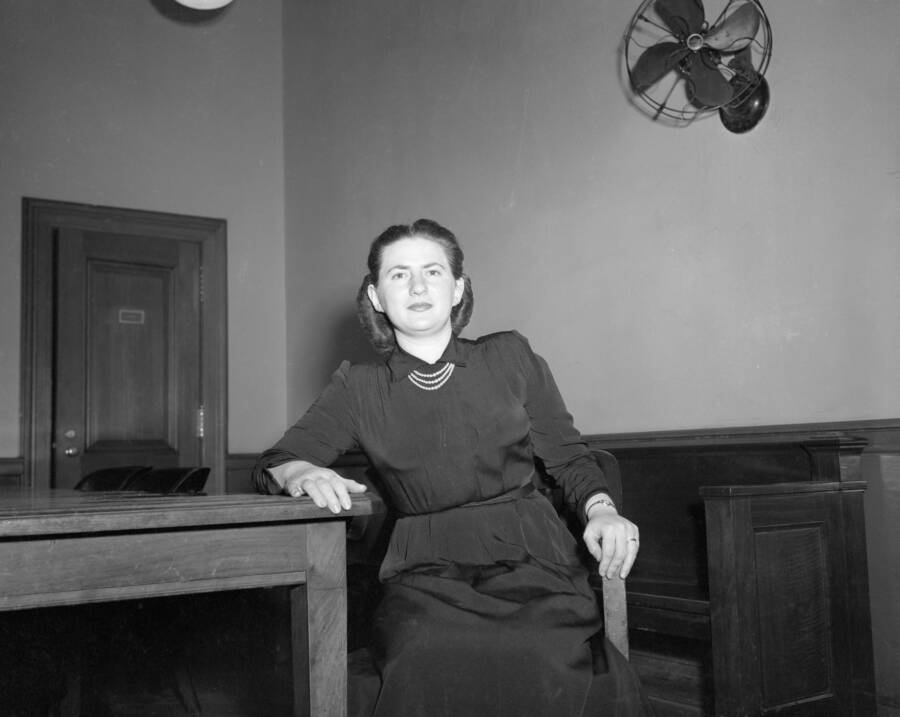
Bettmann/Getty ImagesRuth Greenglass testified that Ethel Rosenberg took notes during the secret meetings between her husband and David Greenglass. Her husband later admitted that this was a lie. March 14, 1951.
The trial began in New York’s Southern District federal court on March 6, 1951. Handling the state’s case was prosecutor Irving H. Saypol, who opened the trial by saying, “The evidence will show that the loyalty and alliance of the Rosenbergs and Sobell were not to our country, but that it was communism. Communism in this country and communism throughout the world.”
On the advice of their lawyers, Emanuel and Alexander Bloch, the Rosenbergs repeatedly pleaded the Fifth Amendment when asked about espionage or their affiliation with the communist party. Though it may have seemed like a wise strategy because the prosecutors actually had little hard evidence, this decision to remain silent only ended up making the couple appear more guilty — like they really had something to hide — in this hyper-paranoid era of McCarthyism.

Leonard Detrick/NY Daily News/Getty ImagesMichael Rosenberg, 10, reads about his jailed parents as his brother Robert, six, stares at the pages. The two have been fighting to exonerate their late mother for decades.
With the Rosenbergs staying quiet and documentary evidence basically nonexistent, the prosecution’s case rested on the testimony of a few key witnesses, especially Greenglass.
Greenglass first testified before a grand jury in August 1950 and he claimed that Julius Rosenberg alone had recruited him after they met on a New York street corner. He asserted that his sister Ethel was not involved at all.
“I said before, and say it again, honestly, this is a fact: I never spoke to my sister about this at all,” Greenglass said.
But a mere 10 days before the trial, Greenglass changed his tune. This time, he claimed both Julius and Ethel Rosenberg had recruited him. It eventually became clear that he did so to save his own wife from prosecution thanks to a plea deal.
Moreover, Greenglass said that he gave Rosenberg a sketch and description of the bomb in September 1945 and that this exchange happened in the Rosenbergs’ living room — in full view of Ethel. He also claimed that she typed notes for her husband during these meetings.
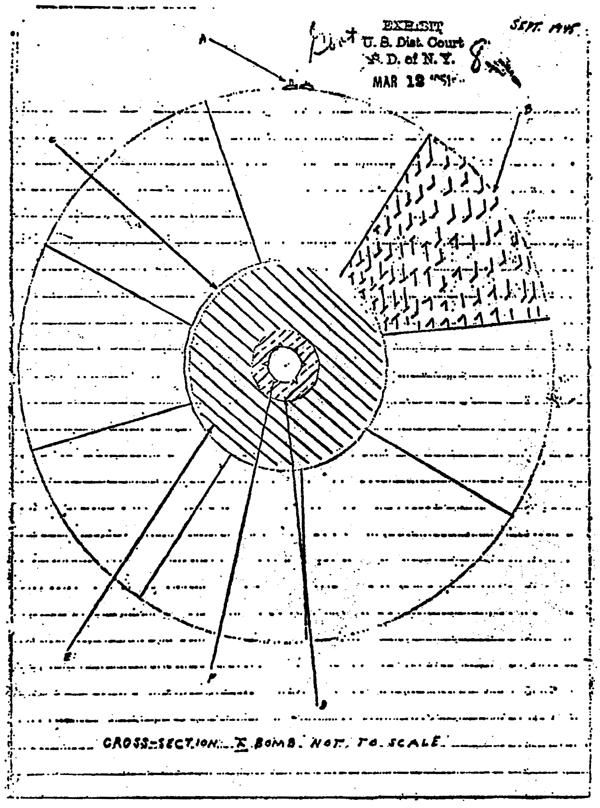
Wikimedia CommonsThe atomic bomb sketch David Greenglass allegedly gave Julius Rosenberg in full view of his sister, Ethel.
Ruth Greenglass testified that “Julius then took the info into the bathroom and read it and when he came out he called Ethel and told her she had to type this info immediately. Ethel then sat down at the typewriter which she placed on a bridge table in the living room and proceeded to type the info which David had given to Julius.”
Ruth’s testimony and her husband’s plea deal kept her out of trouble — even though she may have in fact been more guilty than Ethel.
“I frankly think my wife did the typing, but I don’t remember,” said David Greenglass, who received 15 years in prison, long afterward. Nevertheless, he was most interested in saving his wife even if that meant selling out his sister, saying, “My wife is more important to me than my sister.”
With the testimony of from the Greenglasses as well as Gold, the Rosenbergs’ fate was sealed. They were convicted in 1951 and sentenced to death (according to Joyce Milton and Ronald Radosh’s The Rosenberg File, Cohn later admitted that he recommended Kaufman impose the death penalty).
The sentence was widely decried and those involved even took steps to avoid it — but to no avail.
Greenglass wrote President Eisenhower a letter in 1953, pleading that the Rosenbergs’ sentences be commuted, though it didn’t work. Judge Kaufman, meanwhile, was likewise resolute:
“I consider your crimes worse than murder. I believe your conduct in putting into the hands of the Russians the A-bomb years before our best scientists predicted Russia would perfect the bomb has already caused, in my opinion, the communist aggression in Korea, with the resultant casualties exceeding fifty thousand and who knows how many millions more of innocent people may pay the price of your treason.”
After two years on death row, Julius and Ethel Rosenberg were executed at Sing Sing Prison in Ossining, New York on June 19, 1953.
The Legacy Of The Rosenberg Case
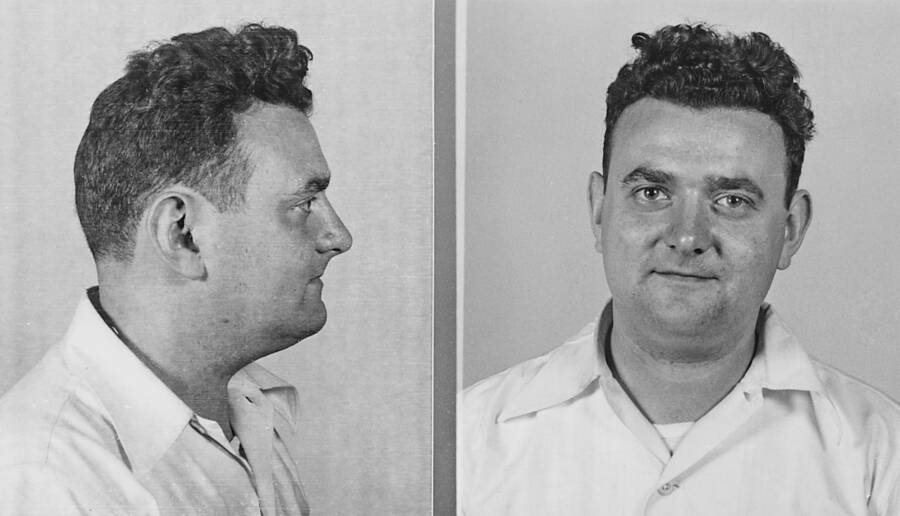
Wikimedia CommonsDavid Greenglass ultimately served nine of his 15 years in prison. He later admitted that Roy Cohn pressured him to incriminate his sister.
Both before and after it happened, the execution was highly controversial. At the time of their trial, even J. Edgar Hoover opposed the execution of Ethel Rosenberg, believing it would reflect badly on the FBI. Most U.S. newspapers believed it was fair punishment, while European publications and citizens generally did not.
Regardless of the sentence’s fairness, the question of their guilt remained murky for decades as well. Finally, new evidence began to come to light as much as a half-century after the fact.
Documents from the U.S. Army’s Signal Intelligence Service’s Venona Project of the 1940s, aimed to gather and decode Soviet messages, weren’t declassified until 1995. Finally, they proved Julius Rosenberg was indeed a spy (his codename was “LIBERAL”).

Bettmann/CORBIS/Getty ImagesDemonstrators at Penn Station in New York prepare to travel to Washington in order to march against the Rosenberg’s death sentence. June 18, 1953.
In 2008, 43 of 46 witness testimony transcripts were released. These showed the utter contradiction between the Greenglass’ testimony before the grand jury and during the trial.
A New York Times interview from the same year showed that Sobell admitted he and Rosenberg passed information to the Soviets in hopes that it would help them fight the Nazis.
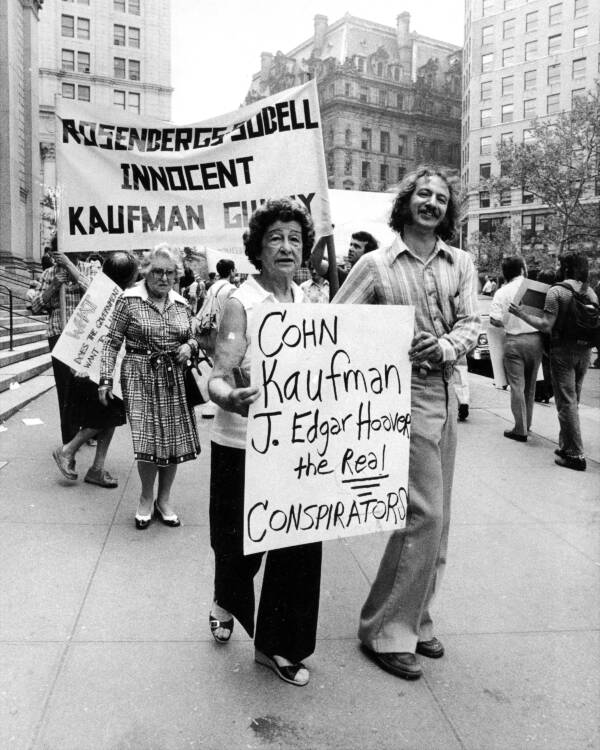
Dan Jacino/NY Daily News Archive/Getty ImagesRose Clinton joins Michael Meerepol, Julius and Ethel Rosenberg’s son, in protesting Ethel Rosenberg’s execution. 1977.
Michael and Robert Meeropol (nee Rosenberg), meanwhile, maintain their mother’s innocence to this day. The siblings created an online petition to exonerate her, though they do admit that the Venona documents prove their father’s guilt.
“The Greenglasses’ lies were necessary to obtain Ethel’s conviction,” they said. “The K.G.B. did not give her a code name, and evidently did not consider her a spy, and the prosecution’s strategy was to use Ethel to coerce her husband to confession.”
Whether it was fair or not, Julius and Ethel Rosenberg were the only two American civilians who were executed for espionage-related crimes during the entire Cold War.
After learning about the trial and execution of Julius and Ethel Rosenberg, read about the Lavender Scare, the U.S. government’s anti-gay purge. Then, learn about the five most infamous American spies.
